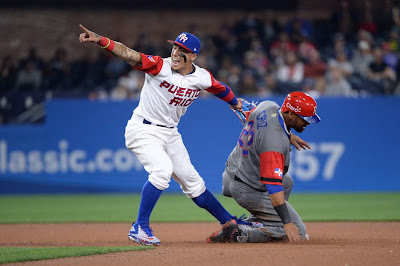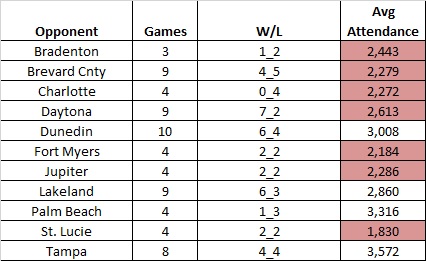Friend of the site Ben Hill of MiLB.com wrote an interesting article last week about the possibility that Cuba could get an Minor League team in the near future. Ben's article was inspired by a recent New York Times article on Lou Schwechheimer, a long-time Minor League Baseball front office administrator and proponent for normalized baseball relations with Cuba.
The NYT piece does a great job talking about the political hurdles Schwechheimer faces: from large-scale distrust between Cuba and the US to the bureaucracy of Cuban politics and the difficulty arranging a meeting with a high-level official. But Schwechheimer has decent political clout on his side in several former US diplomats and people knowledgeable about the US-Cuban relationship.
Although good, the article lacks any description or links to when Cuba did have a minor league team. From 1946 to 1953 Havana was host to the Havana Cubans of the Florida International League and from 1954 to 1959 the city hosted the Havana Sugar Kings in the International League.
While most administrators might want Havana to resume its spot in the AAA-level International League, which is still going strong, what if they shot lower and Havana rejoined a league with a Tampa minor league team? What if the Florida State League went international?
A quick bit of history: Although Tampa has had a minor league presence for most of the last 100 years, the team hasn't always been in the Florida State League. Tampa started in the Florida State League from 1919 to 1927, but joined the Southeastern League from 1928 to 1930. The Southeastern League consisted of teams in Alabama, Georgia, and Florida, to include Tampa, Pensacola, and St. Augustine.
After 16 years without organized baseball, Tampa again joined the minor leagues when the Tampa Smokers became part of the Florida International League in 1946. At the time, the Florida International League included Tampa, St. Petersburg, Miami, Lakeland, Fort Lauderdale, and West Palm. The Florida State League also continued operations in Florida in cities such as Daytona Beach, DeLand, Gainesville, Leesburg, Orlando, Palatka, Sanford, and St. Augustine.
So the Florida International League was central/southern Florida and the Florida State League was central/north Florida. Although the locations have changed, the 14 Florida teams that played then is the same amount of minor league teams the state is home to in 2015 (12 FSL teams and Jacksonville and Pensacola in the Southern League).
While in the Florida International League, the Tampa Smokers did well on the field. They were two-time league champions, had a winning record every year, won over 100 games in 1947, and had the league's best record in 1951.
So could a new version of the Havana Cubans or Sugar Kings join the Florida State League and could the league be re-branded as the Florida International League?
There are benefits to doing so for the Cuban team. For one, travel is a lot less in the Florida State League than in the International League, which stretches from Gwinnett, Georgia to Buffalo, New York. Second, with several million Cuban-Americans in Florida, the Cuban team and players would have a more built-in fanbase in Florida and attract more fans than in the northeast.
For the Florida State League, going international might help attendance and reduce market saturation, especially in Tampa Bay or south Florida. Right now, four teams call Tampa Bay home and they all compete with the Rays. Two teams call south Florida home and they compete on a nightly basis with the Marlins. Moving any one of these teams to Cuba might be beneficial for the team and the league.
Attendance-wise, Havana was once the biggest draw in the Florida International League. According to Steve Treder of The Hardball Times,
Attendance in the FIL boomed, peaking at over 900,000 in 1949. But then it swiftly declined. By 1953 it was less than 300,000. In 1954, the flagship Havana franchise moved up to the “real” International League (class AAA), and the Florida International League — no longer “international” at all — was doomed. On May 6, 1954, two of the league’s remaining six franchises folded, and by July 27, 1954, the entire league had collapsed.
Today, the Florida State League is one of the worst attended leagues in Minor League Baseball. While Minor League Baseball saw its third highest attended season ever in 2015, Florida State League attendance went down 5.4%, with Tampa Bay area attendance dropping 10%.
While the decline might be attributable in part to both the continuous rain Tampa Bay had throughout the summer of 2015 or the fervor of the Tampa Bay Lightning playoff run, a team in Havana would not have the same obstacles. They would be the only affiliated team on an island full of baseball fans. Odds are, they would break the Florida State attendance record of 202,383 set by the St. Pete Cardinals in 1989.
If the political suns align, moving a Florida State League team from either the Tampa area or south Florida to Havana is a low-risk, high-reward opportunity for Minor League Baseball. It is win-win for everyone. The Florida State League should become a new Florida International League.


















































